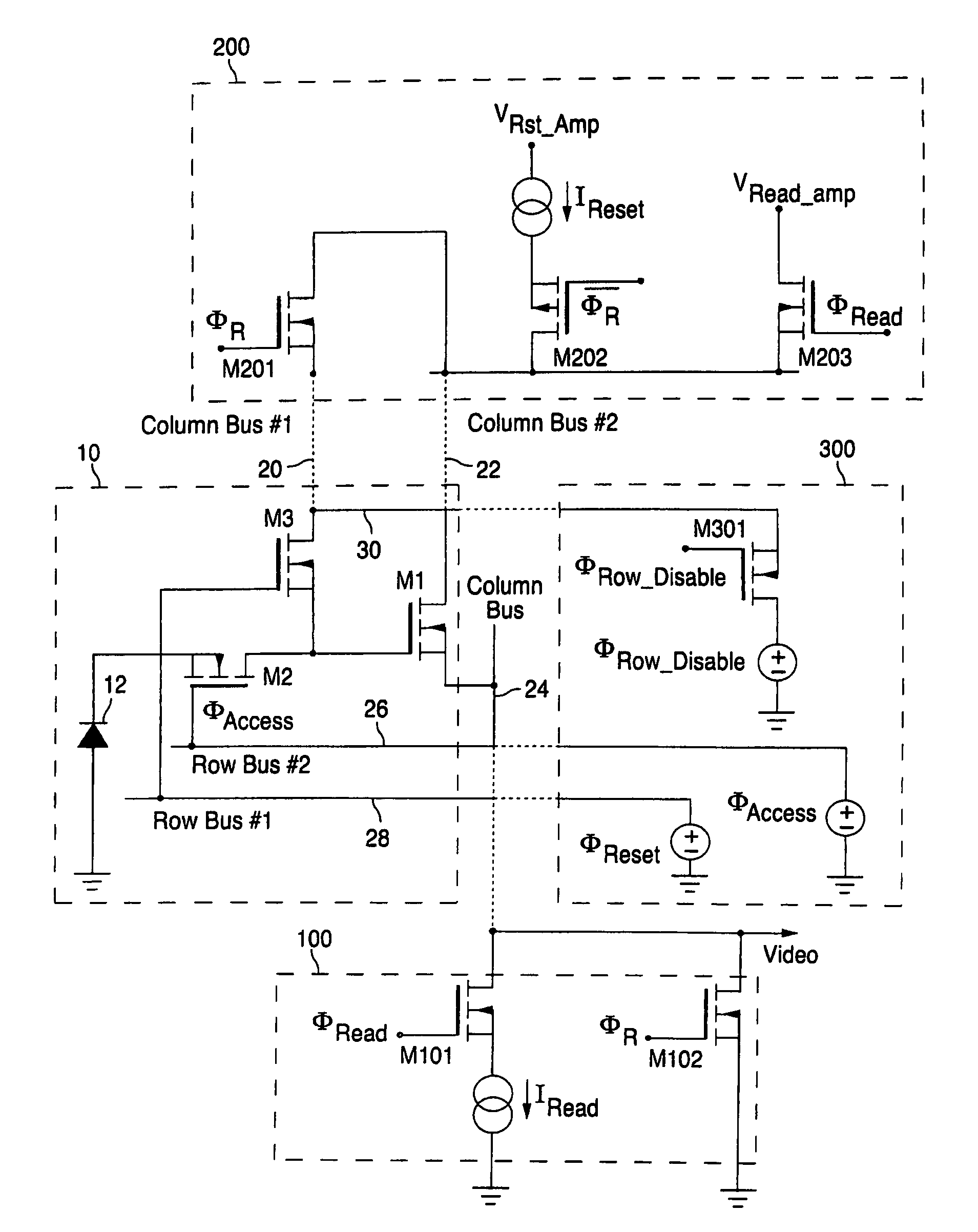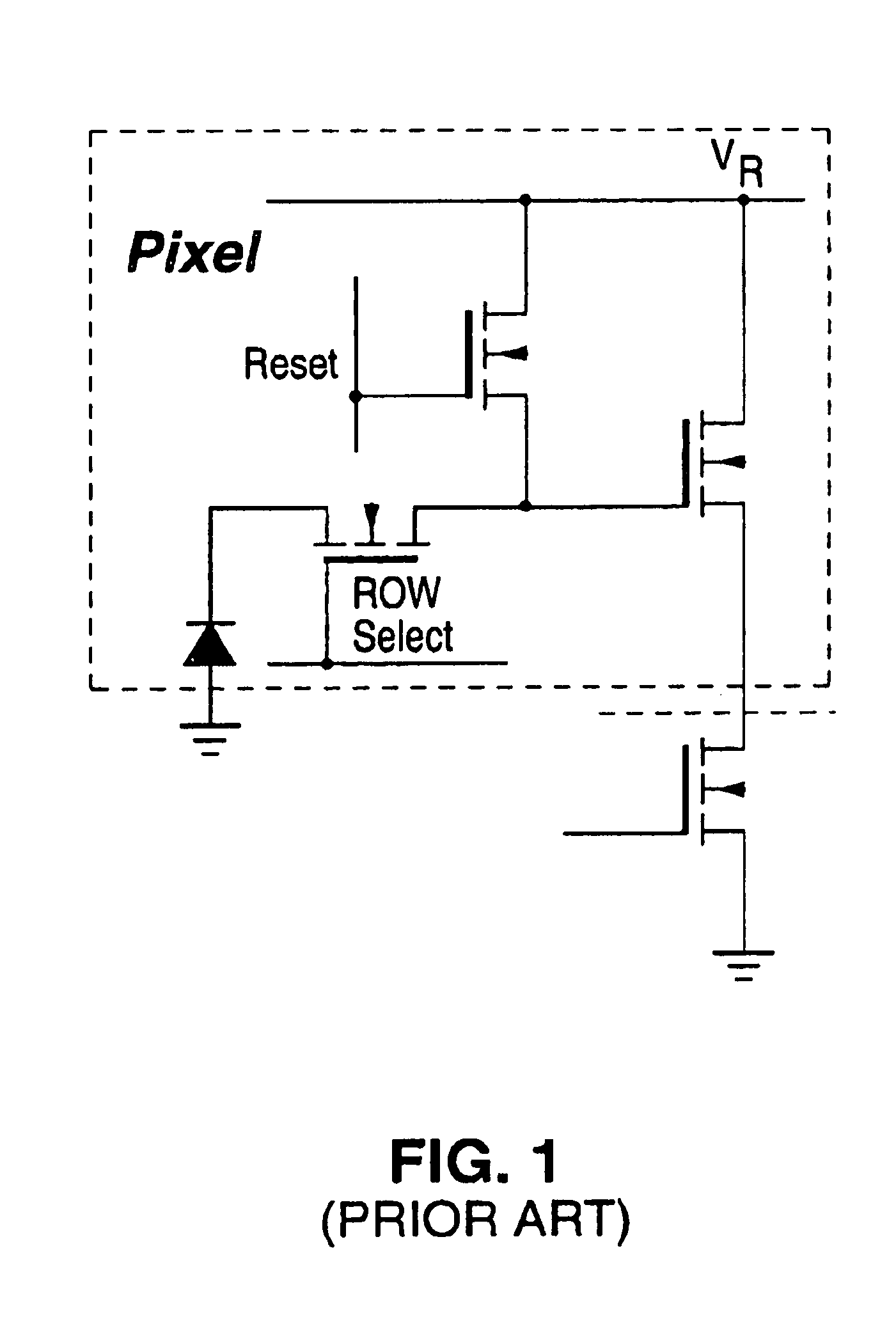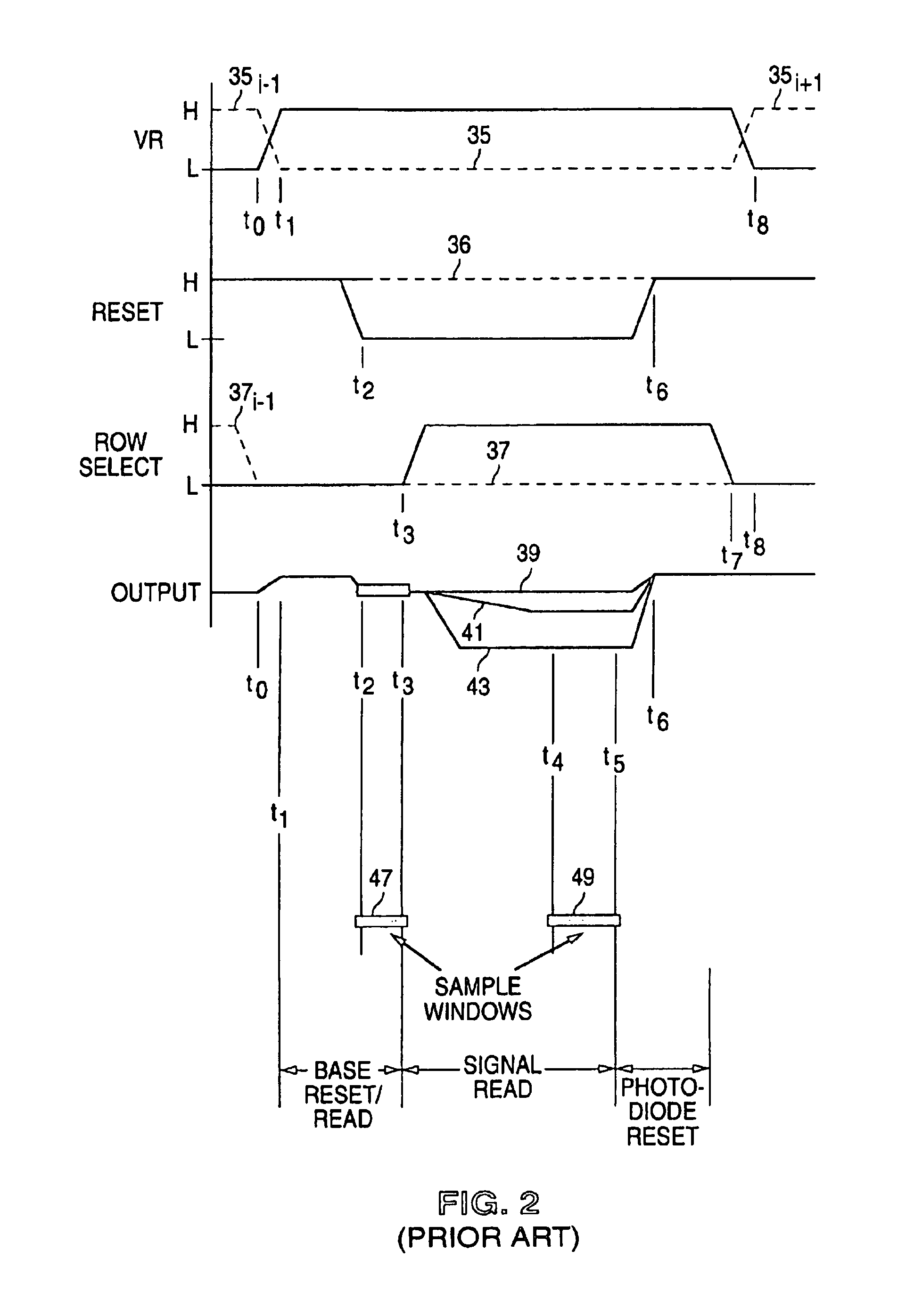Compact active pixel with low-noise image formation
a compact, active pixel technology, applied in the field of electronic imaging devices, can solve the problems of low-noise cmos image sensor performance, inability to normally provide the reset signal of each pixel, and uncertainty about the voltage of each photodetector, so as to reduce the reset noise, eliminate the reset noise, and suppress the effect of reset nois
- Summary
- Abstract
- Description
- Claims
- Application Information
AI Technical Summary
Benefits of technology
Problems solved by technology
Method used
Image
Examples
Embodiment Construction
[0026]The following description is provided to enable any person skilled in the art to make and use the invention and sets forth the best modes contemplated by the inventor for carrying out the invention. Various modifications, however, will remain readily apparent to those skilled in the art, since the basic principles of the present invention have been defined herein specifically to provide a low noise CMOS image sensor circuit. Any and all such modifications, equivalents and alternatives are intended to fall within the spirit and scope of the present invention.
[0027]The CMOS readout and amplification system of the present invention includes an exemplary design for an active-pixel CMOS imager. A prototype embodiment of the low-noise Active Pixel Sensor (APS) invention can be configured, for example, as a visible imager comprising an array of 1024 (columns) by 728 (rows) of visible light detectors (photodetectors). The rows and columns of active-pixels can be spaced 5 microns cente...
PUM
 Login to View More
Login to View More Abstract
Description
Claims
Application Information
 Login to View More
Login to View More - R&D
- Intellectual Property
- Life Sciences
- Materials
- Tech Scout
- Unparalleled Data Quality
- Higher Quality Content
- 60% Fewer Hallucinations
Browse by: Latest US Patents, China's latest patents, Technical Efficacy Thesaurus, Application Domain, Technology Topic, Popular Technical Reports.
© 2025 PatSnap. All rights reserved.Legal|Privacy policy|Modern Slavery Act Transparency Statement|Sitemap|About US| Contact US: help@patsnap.com



